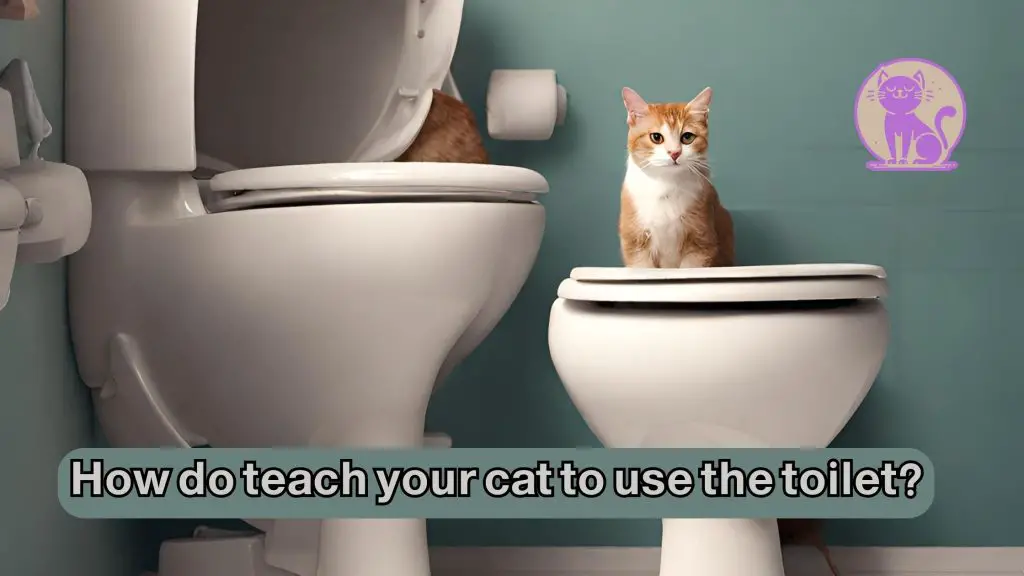Are you intrigued by the possibility of a litter-free home? If you’re considering leaping to teach your cat to use the toilet, you’re not alone. Many cat owners are embracing this innovative approach to improve their cat toilet habits. Toilet training not only offers a cleaner living space but also caters to your furry friend’s natural inclinations. Discover how this hygienic alternative could revolutionize the way you manage your cat’s waste, and heed expert advice on how to make your cat use the toilet. It’s a step towards convenience and cleanliness that might just change your pet care routine forever.
The Benefits of Toilet Training Your Feline Friend
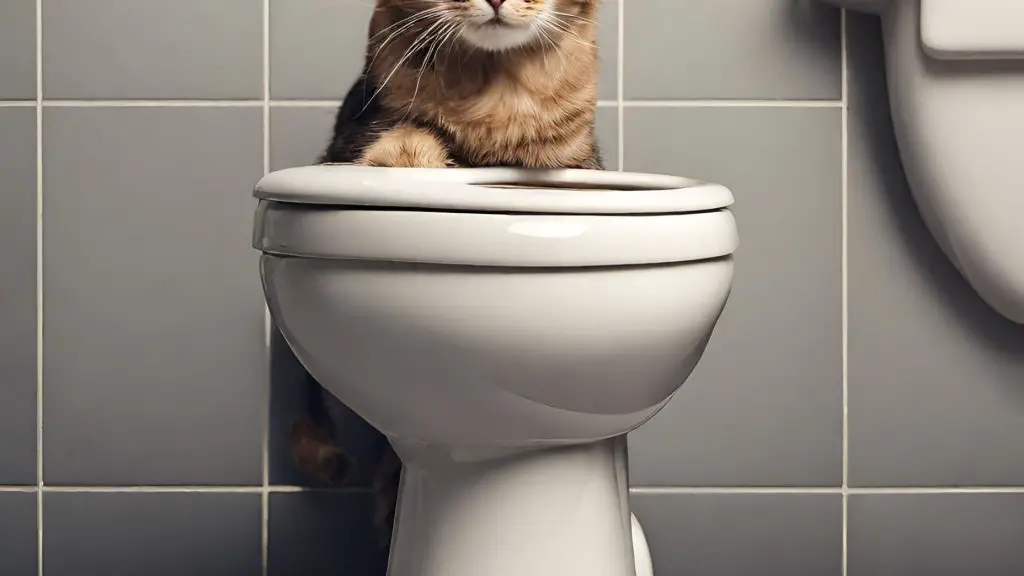
The idea of teaching your cat to use a human toilet carries multiple benefits that enrich both the lives of pet owners and their beloved feline companions. When you toilet-train your feline friend, you unlock a world of advantages that extend far beyond the novelty of the act.
- Improved Home Hygiene: Cats are clean animals by nature, and by toilet training them, you maintain that cleanliness throughout your home. The absence of a litter box means no more litter scatter and the odors that come along with it.
- Economic Savings: While the initial investment in toilet training may involve some accessories, long-term savings are substantial. No longer purchasing cat litter saves money month after month.
- Eco-Friendly Approach: Traditional cat litter can have a negative impact on the environment. Toilet training your pet reduces waste and eliminates the need for plastic litter bags.
- Convenience for Pet Owners: Life becomes simpler when you no longer have the daily task of cleaning out the litter box. This translates into more quality time to spend with your cat or on other activities.
- Reduced Exposure to Litter Dust: Litter dust can be harmful to both cats and humans. By ditching the litter box, exposure to these potential allergens is minimized, potentially contributing to improved health for everyone in the household.
As you consider toilet training tips for cats, keep these benefits in mind. The transition from litter box to toilet can offer a hygienic, economical, and more sustainable way of living with your cat. All it takes is a little patience and the right guidance to embark on this journey toward a cleaner, happier home for you and your pet.
Understanding Your Cat’s Natural Toilet Behavior
As feline enthusiasts, understanding your cat’s natural toilet behavior is crucial to a successful toilet training experience. Cats are creatures of habit with strong instincts, and recognizing these natural tendencies can greatly facilitate the transition from litter box to toilet use. Let’s explore the signs indicating readiness for this training and how to set up a conducive toilet environment for your furry companion.
Recognizing Readiness for Toilet Training
Identifying the right time to begin toilet training is pivotal. Observable signs such as your cat’s ability to follow simple commands, interest in the bathroom, or consistent use of the litter box are promising indicators. Consistency in their toilet behavior lays the groundwork for successful toilet training for cats. Kittens generally adapt more quickly, but with patience, adult cats can also be guided through this process. Moreover, demeanor plays a role; a curious and confident cat will likely take to training cats for toilet use with more enthusiasm than a timid one.
Creating a Comfortable Toilet Environment
Transitioning to a new toilet habit can be a source of stress for felines, so creating a comfortable and welcoming environment is essential. The toilet area should be easily accessible, serene, and maintain some aspect of privacy. Employing a gentle approach and positive reinforcement can ease your pet into this new practice. Remember, an abrupt change can upset your cat’s toilet behavior, so patience and gradual adjustment are key components of toilet training for cats.
Noteworthy tips for a smooth transition:
- Keep the toilet lid up and the seat down, adding stability to your cat’s newfound restroom rituals.
- Start by placing a litter box near the toilet to build familiarity with the location.
- Gradually raise the litter box to align with the toilet height over time, ensuring your cat is comfortable at every elevation increase.
- Use flushable litter during the transition period to create an association between the toilet and their normal elimination area.
By focusing on your cat’s comfort and readiness, adapting your approach to their distinctive cat toilet behavior, and judiciously scheduling the transition, you can skillfully navigate your pet towards successful toilet use.
Preparation Steps Before Starting Toilet Training
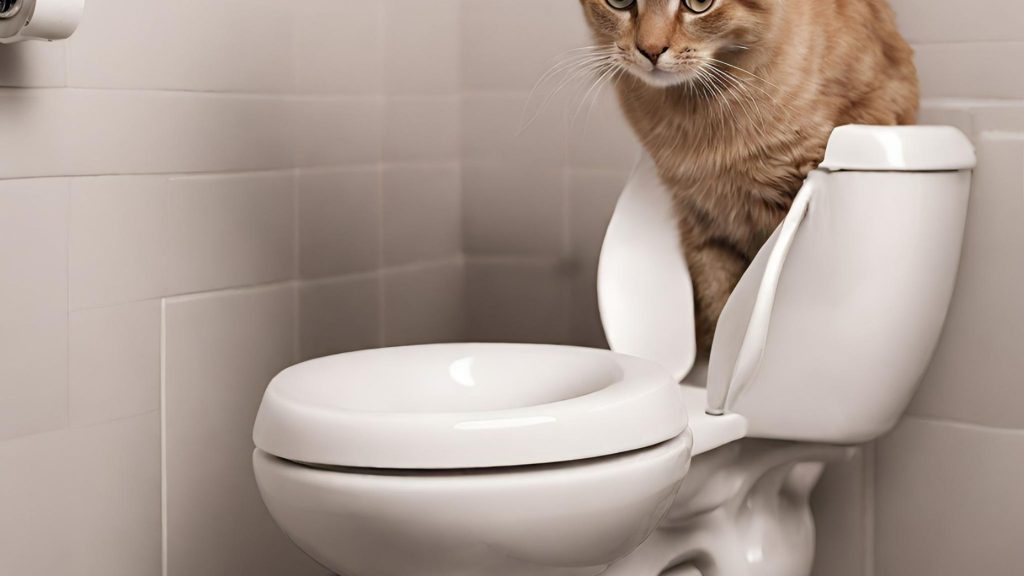
Embarking on cat toilet training requires methodical preparation to ensure a smooth transition from litter box to toilet. To assist in this significant change, one must follow an organized step-by-step cat toilet training approach. The following are crucial steps before introducing your feline to their new bathroom routine.
- Evaluate Your Cat’s Readiness: Observe your cat’s litter habits to determine their consistency and ensure they’re of the appropriate age—typically over 3 months.
- Choose the Right Equipment: Acquire a cat toilet training kit, which often includes a training seat to fit over the toilet bowl and a guide on how to incrementally use it.
- Set Up a Training Schedule: Cats thrive on routine. Decide on a training timeline that won’t be rushed, allowing your cat to adjust at its own pace.
- Familiarize Your Cat with the Bathroom: Let your cat spend time in the bathroom to become comfortable with the space and sounds.
- Ensure Safe Toilet Accessibility: Make sure the path to the toilet is always accessible, and consider using a step or stool for smaller or less agile cats.
Take note of the importance to not only prepare physically but also mentally for the process. Patience and steady encouragement are integral to teaching your cat new toilet habits.
| Preparation Item | Description | Importance |
|---|---|---|
| Toilet Training Kit | Includes a training seat and instructional material | Critical for gradual transition phases |
| Training Schedule | A consistent plan tailored to your cat’s pace | Ensures routine, reducing stress for the cat |
| Safe Accessibility | Unhindered passage to the toilet with support as needed | Prevents accidents and fosters independence |
By setting up the environment and expectations in advance, your efforts in cat toilet training will be met with greater success. As with any behavioral adjustment, preparation can pave the way for a smooth transition and a cleaner, happier household.
The Step-by-Step Process of Cat Toilet Training
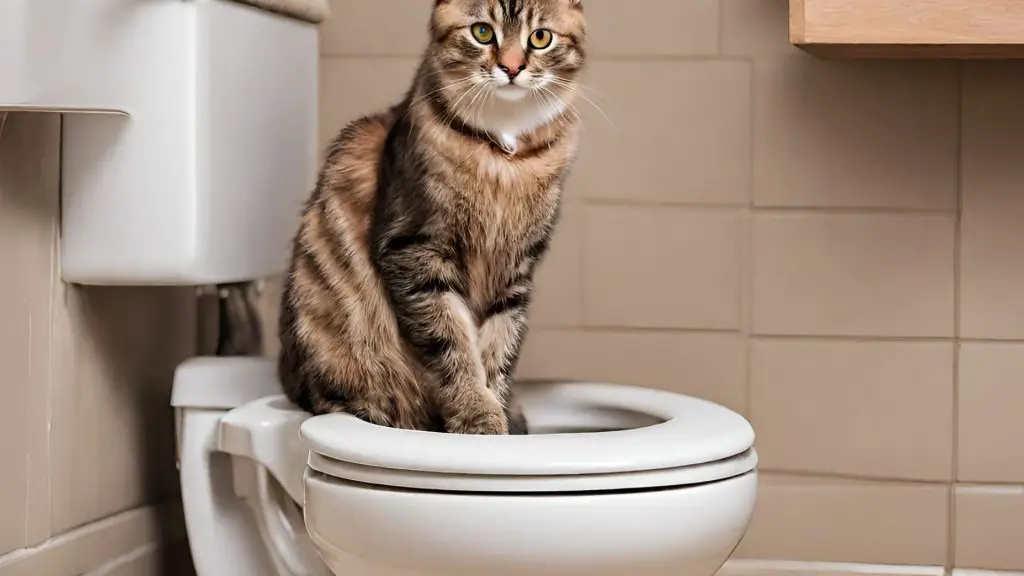
Embarking on the journey to teach cat toilet habits requires patience, consistent effort and a structured approach. Transitioning your feline from litter box to lavatory not only contributes to a cleaner home but also fosters a deep sense of accomplishment for both you and your cat. Here’s how to teach your cat to use the toilet, broken down into manageable steps.
Introduction to the Toilet Area
Create a positive association with the new toilet area by placing your cat’s litter box near the toilet. This will allow your cat to become accustomed to the area and the sounds associated with the toilet. Spend time with your pet in this space to build comfort and familiarity.
Gradual Transition to the Toilet
Begin the transition by gradually raising the height of the litter box closer to the level of the toilet seat using stable platforms. This methodical elevation helps your cat adjust to the new height. Switch to a special training seat that fits over the toilet bowl, and progressively reduce the amount of litter it contains. Ensure your cat is confidently using each stage before moving on to the next. Here’s a visual breakdown:
| Stage | Description | Duration |
|---|---|---|
| Stage 1 | Place litter box next to the toilet | 1-2 weeks |
| Stage 2 | Elevate litter box gradually | 2-3 weeks |
| Stage 3 | Introduce training seat with litter | 3-4 weeks |
| Stage 4 | Reduce litter in training seat | 3-4 weeks |
| Final Stage | Remove training seat entirely | 1-2 weeks |
Removing the Litter Box
Once your cat is using the training seat without any litter, it’s time to remove the training seat entirely. Observe your cat to ensure they are comfortable using the toilet without the seat. If your cat hesitates, it may be necessary to revisit the previous step for a short period. After successfully using the toilet, always reward your cat to reinforce the behavior.
Teach Your Cat to Use the Toilet: Starting Out
Embarking on the adventure of toilet training your cat can be both exciting and intimidating. To ease into this revolutionary method, we’ve compiled essential toilet training tips for cats to help begin the journey. Consistency and patience will be your guideposts along this path.
- Establish a Routine: Cats thrive on routine. Begin by placing the litter box near the toilet to acclimatize your cat to the new location and ensure they are comfortable with this change.
- Height Gradation: Slowly elevate the litter box over a period of days, bringing it to the level of the toilet seat. This gradual adjustment can prevent any anxious reactions from your furry companion.
- Familiarization: Let your cat explore the area around the toilet. Encouragement and treats can help form positive associations with this new spot.
- Use a Training Kit: Research and invest in a cat toilet training kit. These seats fit over the toilet and have a series of rings you can remove as your cat progresses, creating a larger and larger opening until the ring is no longer needed.
- Monitor Progress: Pay attention to how your cat responds at each stage. If your cat seems hesitant, give them more time to adjust before moving to the next step.
- Praise and Reward: Positive reinforcement goes a long way. Reward your cat with treats and affection when they use the toilet correctly.
Remember, some cats may take to toilet training quickly, while others may need more time. Read your cat’s cues and progress at a pace that is comfortable for them. With these toilet training tips for cats, you’ll pave the way for a smooth transition from litter box to toilet.
Troubleshooting Common Issues During Toilet Training
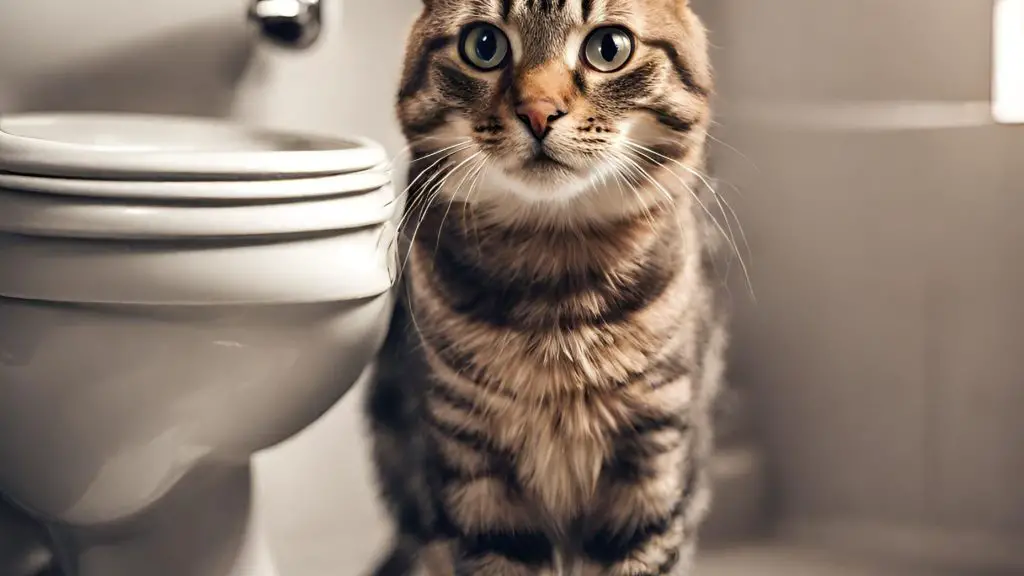
Embarking on the journey to toilet train your feline friend can be filled with unexpected twists and turns. Despite your best efforts, there might be a few cat toilet training issues that need to be addressed. Let’s go through some of the common hurdles and their solutions.
Dealing with Accidents
Accidents are a natural part of the learning curve when you’re teaching your cat to adopt new habits. It’s important not to punish your pet for these mishaps, as negative reinforcement can lead to fear and distrust. Instead, be patient and clean up accidents thoroughly to remove any lingering odors that might attract your cat back to the same spot.
Addressing Reluctance and Fear
Reluctance or fear can be significant barriers when toilet training cats. If your cat seems hesitant to use the toilet, consider its placement. Ensure the area is quiet, easily accessible, and that the toilet seat is stable—a wobbly seat can deter your cat from attempting to hop on. With time, encouragement, and positive reinforcement, most cats can overcome their initial concerns.
| Issue | Reason | Expert Solution |
|---|---|---|
| Avoidance of Toilet | Lack of familiarity | Gradually introduce your cat to the toilet area and encourage exploration with treats and praise. |
| Inconsistent Use | Dislike for the new texture or instability | Use a training seat that gradually transitions your cat from litter to toilet. Ensure the seat is secure and non-slip. |
| Fear of Flushing Noise | Noise sensitivity | Flush only when the cat is not in the vicinity. Gradually acclimate them to the sound over time. |
| Mess Around the Toilet | Difficulty balancing | Provide a stepping stool or a ramp to make access easier and encourage better positioning. |
Advanced Cat Toilet Training Techniques
Once your feline has mastered the basic principles of toilet training, it’s time to elevate their skills with advanced cat toilet training techniques. These methods are designed to ensure that your cat’s toilet habits are not just a temporary behavior but an ingrained part of their daily routine. We will dive into refined strategies to teach cat toilet habits that stand the test of time and provide utmost reliability.
- Incremental Reward Reduction: Begin to gradually decrease the rewards given for successful toilet use, helping your cat to rely less on incentives and more on routine.
- Stress Management: Introduce calming techniques to help your cat maintain their toilet habits even during potentially stressful situations or changes in the environment.
- Varied Timing: Mix up the times at which you encourage your cat to use the toilet, fostering a sense of comfort with toilet use regardless of the time of day.
- Longer Term Positive Reinforcement: Shift from frequent rewards to occasional treats coupled with verbal praise to maintain the toilet training in the long run.
These advanced strategies require patience, keen observation, and a deep understanding of your cat’s behavior. By implementing these techniques, you reinforce the sustainability of your cat’s new toilet habits and ensure a smooth adaptation into your family’s lifestyle.Always remember, every cat is unique and may respond differently to advanced training – flexibility in your approach will yield the best results.
Maintaining Your Cat’s Toilet Habits Long-Term

Ensuring that your cat consistently uses the toilet requires a commitment to sustaining the behaviors established during the training phase. The key to long-term maintenance of toilet training for cats lies in ongoing reinforcement and upholding a pristine environment conducive to their new habits. This is about creating a routine that your cat can rely on, bolstered by approaches that bolster these good behaviors. Let’s delve into practical strategies that keep your cat on the right track.
Regular Toilet Cleanliness
One of the cornerstones of maintaining cat toilet habits is keeping the toilet clean and inviting. Cats are naturally clean animals, and a soiled toilet may discourage them from following their training. It’s imperative to regularly sanitize the toilet, ensure it’s always accessible and free of any obstructions. Just as freshness matters in their mealtime, it equally influences their toilet experience. A clean toilet aligns with their instinctual drive for hygiene and is critical for promoting consistent use.
Reward Systems and Positive Reinforcement
Positive reinforcement remains an effective tool in reinforcing desired behavior. Embed a reward system into your cat’s routine, praising them and offering treats for continued use of the toilet. Such reinforcement makes the process enjoyable for them and strengthens their association between the toilet and positive outcomes. Keep the rewards varied and engaging, and remember the power of affection — a little chin scratch or a warm word can go a long way in encouraging your feline friend to keep up the good work.
FAQ
Q: What are the benefits of teaching a cat to use a regular toilet?
A: Toilet training your cat can lead to improved home hygiene, reduced litter costs, decreased environmental impact from discarded litter, and health benefits for your cat by minimizing exposure to litter dust.
Q: How can I tell if my cat is ready for toilet training?
A: Indications that your cat is ready for toilet training include consistent litter box use, showing interest in following humans to the bathroom, and demonstrating an ability to learn and adapt to new routines and environments.
Q: What kind of environment is best for transitioning my cat from a litter box to a toilet?
A: The ideal environment for cat toilet training is a quiet, stress-free bathroom. Ensure the toilet area is easily accessible, the toilet seat is always up, and consider using a training device to bridge the gap between the litter box and the toilet.
Q: What preparations are needed before beginning to toilet train my cat?
A: Before starting toilet training, gather necessary supplies like a toilet training kit, set a consistent schedule, and prepare the designated bathroom to be welcoming and accessible for your cat.
Q: Can you provide a simple step-by-step process for cat toilet training?
A: Yes, the process involves gradually introducing your cat to the toilet area, using a training seat to acclimate your cat to sitting on the rim, and incrementally removing litter and transitioning fully to the toilet. Consistent training and patience are crucial throughout this process.
Q: How do I start toilet training my cat?
A: Begin by placing the cat’s current litter box near the toilet, allowing adaptation to the new location. Next, use a training seat filled with flushable litter atop the toilet and slowly reduce the amount of litter as your cat becomes comfortable using the toilet.
Q: What should I do if my cat has an accident during toilet training?
A: Stay calm and clean up accidents thoroughly with an enzyme cleaner to remove odors. Reassess the pace of training, as it may be necessary to slow down the transition or revisit a previous step to reinforce positive habits.
Q: How can I help my cat if it shows fear or reluctance to use the toilet?
A: Address fear and reluctance by providing a stable and non-slippery toilet training seat, using treats and praise to create positive associations, and never forcing your cat to use the toilet. Patience and positive reinforcement are key.
Q: What are some advanced techniques for perfecting my cat’s toilet habits?
A: Advanced techniques may include reducing the litter in the training seat to a minimal amount, practicing at various times of day to build consistency, and using cues or commands to prompt your cat to use the toilet on a regular schedule.
Q: How can I ensure my cat maintains its toilet habits over the long term?
A: Long-term maintenance of your cat’s toilet habits involves keeping the toilet clean, maintaining a strict routine, consistently offering rewards for successful toilet use, and offering positive reinforcement to reinforce the desired behavior.

